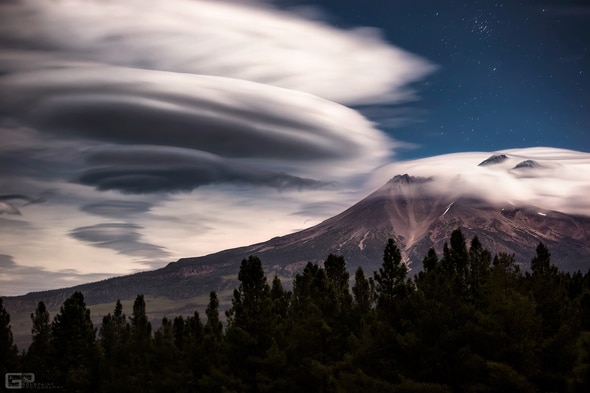Create a free profile to get unlimited access to exclusive videos, sweepstakes, and more!
Seeing Through a Cloudy Lens

Going through old emails is like a treasure hunt sometimes. I found a gorgeous photo of a spiral galaxy recently, and then saw an email from photographer Brad Goldpaint about another type of object of my affection: lenticular clouds.
These are lens-shaped clouds sculpted by winds, usually found over mountains. The rising air can create standing waves, stationary up-and-down oscillations, downwind. The first crest, just downwind of the mountain, can form a cloud as the air rises and cools. The moisture in the cloud is swept downstream but is replaced by more air rising … and you get a stationary cloud, lens-shaped due to the flowing wind, that seems to hover near the mountain peak.
It’s no surprise people think these are UFOs sometimes. They’re honestly pretty amazing.
The photo above shows a magnificent example over Mount Shasta, which Goldpaint took in 2015. It shows the lenticular clouds lit by the Moon in the evening. As cool as that photo is, I like the one he took a bit earlier even better, when the clouds over Shasta were lit by the setting Sun.
Holy wow! That smooth cloud over the mountain is an indication of laminar flow, smoothly moving air. I love how it follows the contour of the mountains.
Goldpaint also made a short time-lapse video showing how the clouds are stationary even as the air moves:
How cool is that?
I spot lenticular clouds pretty often, seeing as how I live near the foothills of the Rocky Mountains. I saw some just the other day, in fact:
As I said when I posted this shot on Instagram, “Goats and lenticular clouds. Maybe the first time those words have ever been used together.”
If you like Goldpaint’s work, then check out his gallery. And if you want more lenticulars, I have links to some other spectacular shots below. Enjoy.














